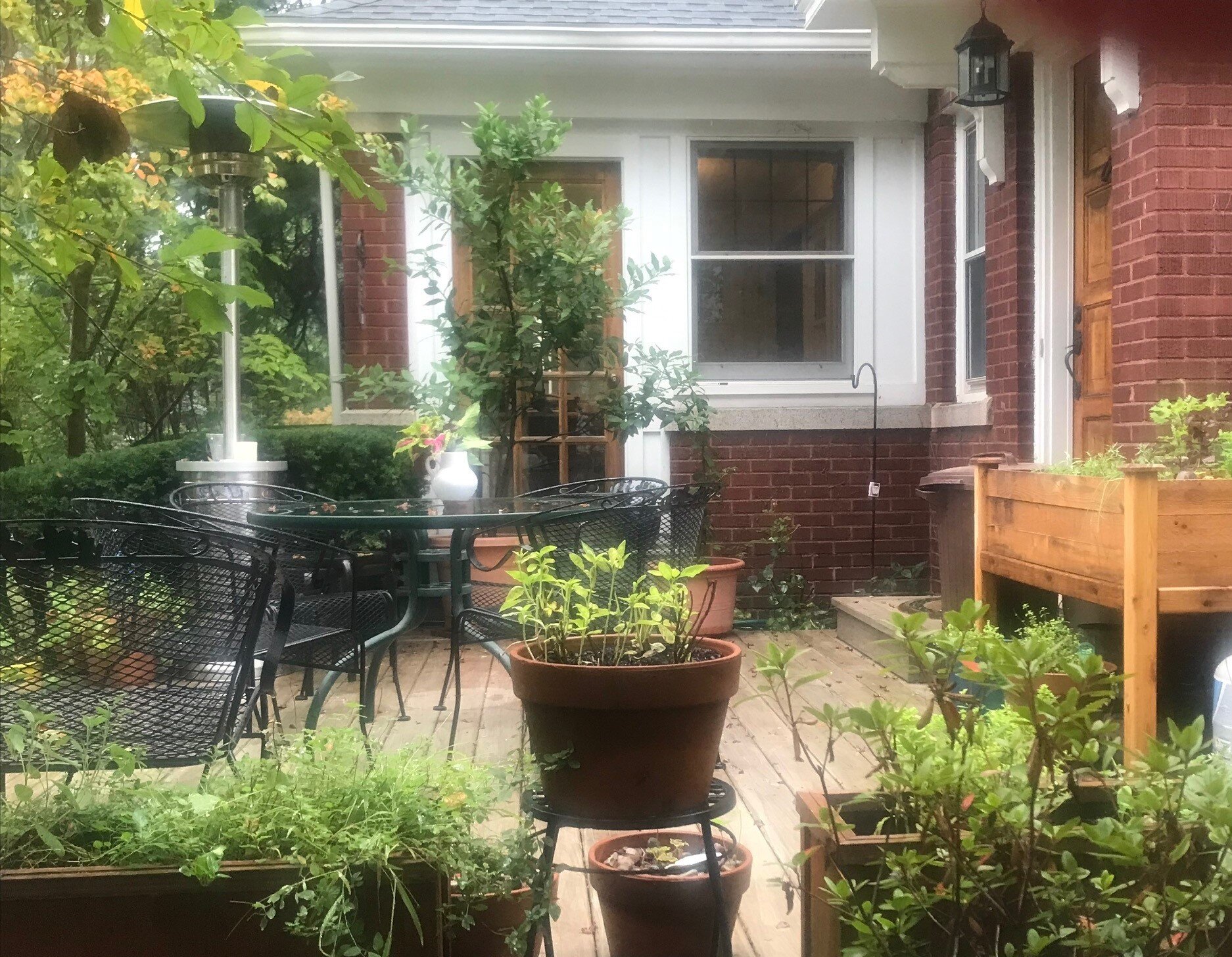Slow Medicine: Gardening, Patient Care, and Ourselves
/Each year I plant a garden, but since the start of the pandemic, I’ve been more attentive and ambitious. My garden plot gets just enough sun for cherry tomatoes, and I have herbs growing in pots on the deck just outside my home office. I also have two bay laurel trees, now over 7 feet tall, which I grew from seedlings.
The trees and herbs do well with little effort during the Rochester summers, with many hours of sunlight owing to the northern latitudes, and the right amount of rain. They need more attention during the unforgiving Rochester winters, though. From late October until early May, I bring the trees and many of the herbs into my study, a converted porch with windows on three sides. With the restrictions on travel and gatherings, my study has also become my academic home, co-habiting with my indoor winter garden in a more intimate way than in years past.
Starting last year, I also acquired three small trees: a fig, an olive and a lemon. They, too, are making their way to my study this month. To protect their delicate fruits, these trees require even more attention than the herbs and the bay trees. Because I can be with these plants every day, I am more attentive to small changes: Are the leaves a bit yellow? Do I need to prune? Now that I am bringing the plants indoors, I focus more on creating an environment in which these plants can grow and flourish – the right nutrients, temperature and sunlight.
In her book, God’s Hotel, physician-author Victoria Sweet contrasts “fast medicine,” with its emphasis on reversing pathology through medication and surgery, and “slow medicine,” with its emphasis on close attention to individuals’ unique illness trajectories and optimizing the conditions that help the body heal. According to Sweet, practicing fast medicine is more like being a mechanic whereas practicing slow medicine is more like being a gardener.
Although medical education tends to focus on fast medicine, all clinicians eventually learn that clinical care has a lot in common with gardening. We pay attention to the organism, the environment in which it lives, and the interaction between the two. We search for evidence on numerous websites, but we need good teachers to help us pay attention to what really matters. William Osler, an early icon of modern medicine, once said, “We miss more by not seeing than by not knowing.” He, and others, went on to elaborate how we can sometimes ignore the obvious. George Engel, developer of the biopsychosocial model of care, took Osler’s wisdom to heart. After seeing a patient on rounds in the hospital, Engel asked me, “What didn’t you notice?” At first I thought that it was a trick question. He asked again, “You told me what was there, but what wasn’t there? What didn’t you see?” His question stopped me in my tracks. Only then did was I aware of the absence of greeting cards, flowers or any sign that anyone cared. The patient was older and had suffered a stroke, but could still communicate, albeit with difficulty. Engel knew to look for what was lacking, as much as for what was present, and with a simple question, made it clear that the patient not only needed anticoagulants; he also needed someone who cared enough to support him on his road to health.
This lesson is not just about gardening and patient care. It is also about ourselves. During this long and often dark pandemic, many of us have had the opportunity to observe ourselves, attentive to what is there and what is lacking. And, I’m not just talking about the plastic surgery and botox “Zoom Boom,” prompted by never-ending angst when our appearance on the Zoom screen doesn’t match the image we’d like to have of ourselves. For many of us, the isolation and greater intimacy with ourselves sometimes has led to a deeper sense of discord—between our deepest aspirations and the nature of our daily work. Here we can look at ourselves through the eyes of a mechanic (Should I change jobs?), and also through the eyes of a gardener (How can I flourish?). Here are a few questions that I ask myself at those moments: What requires my attention about my professional life? If I’m ignoring something, what might that be? Is there something I’m not seeing? What nutrients do I need?” and How can I help to create an environment in which I, and those I care about, can grow and flourish?
And as teachers and mentors, we can also ask our students and mentees these same questions, and help them see the obvious that had previously escaped their attention. Sometimes the answers to these questions are surprising, disruptive or disturbing; yet, they often lead to greater clarity and point toward new ways to grow and flourish.
